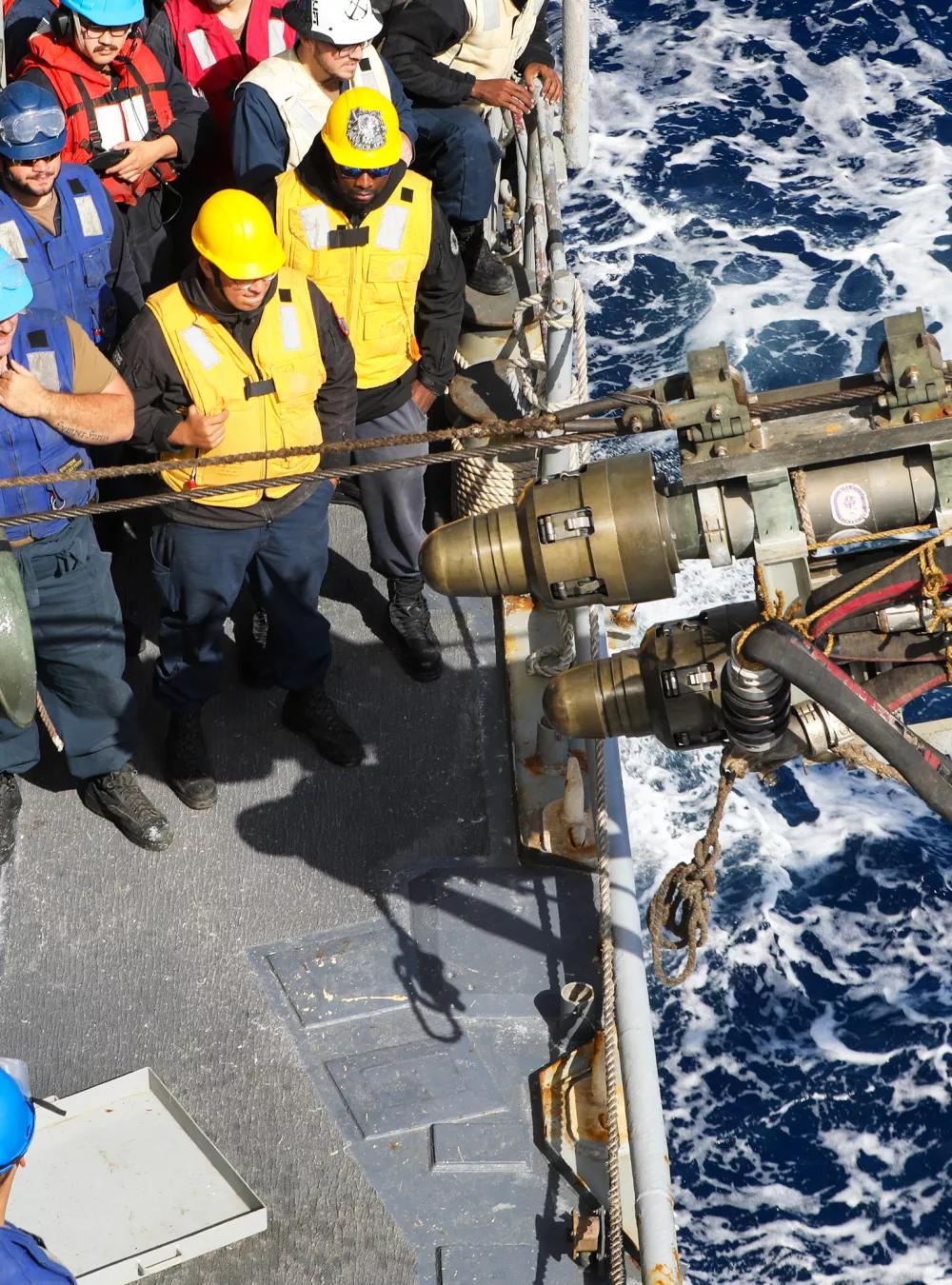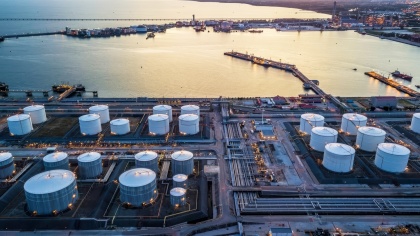A novel modeling tool is helping the U.S. military improve how they manage bulk fuel, enhancing joint readiness while saving time and resources for strategic decision-making.

Optimizing Bulk Fuel Logistics for Warfighting Success
Bulk fuel logistics for military operations is big business. How big?
The Pentagon, the U.S. government’s largest purchaser and consumer of bulk fuel, reported spending $10.3 billion in 2022 to support the armed forces worldwide.
The takeaway: Optimal bulk fuel management is critical to ensuring America’s warfighters can accomplish their mission.
As the single manager for global bulk fuel logistics, U.S. Transportation Command (USTRANSCOM) engaged MITRE in 2023 to design and prototype a decision-support tool to help meet the military’s fuel needs over long durations and in contested environments.
In collaboration with USTRANSCOM modelers and fuel planners, MITRE designed the initial Bulk Fuel Flow Optimization prototype, known as BUFFALO. This includes ongoing research to improve the tool’s optimization engine. It’s the first comprehensive optimization-model-based capability deployed to warfighting environments to aid the huge scope of bulk-fuel planning.
USTRANSCOM can leverage the tool to determine how much fuel is needed, how to get it where it needs to go, and how to adapt when circumstances change.
“We’re talking about theater-wide bulk-fuel plans looking ahead several months—an overwhelming number of options,” says MITRE’s Doug Altner, BUFFALO task lead.
Using BUFFALO, military planners can account for more considerations than humanly possible, automate and accelerate crucial analysis functions, and recommend the most-optimal plans, given myriad real-world conditions.

High-Fidelity Model for High-Demand Requirements
Bulk fuel logistics rely on a sprawling, global network of suppliers, storage facilities, and tactical delivery systems. Managing it requires robust planning, security, and contingency measures to address challenges like supply-chain disruptions and operations in hostile environments. This work is particularly critical in theaters like the Pacific, where demand exceeds capacity.
Planners must consider: How do they procure and store bulk fuel to meet various commands’ requirements? How should they direct a fleet of tankers to pick up and deliver fuel over time? What do they do when the unexpected happens—seas become contested, units get lost, resources run low?
“BUFFALO provides a systematic way to think across the entire theater about all relevant considerations, from suppliers to consuming locations, and look for ways to meet more requirements at lower cost and risk,” Altner explains.
Its customized, high-fidelity mathematical model accounts for all relevant factors, from supply and demand to tanker availability to port depth. It enables a range of “what-if” analyses to understand the impact of changing circumstances.
Altner describes the tool’s development journey as “a partnership from day one.” That included continuous collaboration with USTRANSCOM bulk-fuel experts and analysts to determine how the model would be most realistic and useful.
As the not-for-profit operator of the federally funded research and development center for national security, MITRE advances such innovations with no product quota or equity interest. That unique role and vantage point enabled us to create a key component of BUFFALO solely for our nation’s benefit—with the government able to transition the prototype as they see fit.
BUFFALO provides a systematic way to think across the entire theater about all relevant considerations...to meet requirements at lower cost and risk.
Freeing Up Space for Strategy
With specialized shortcuts and “rules of thumb” incorporated into the optimization model, BUFFALO enables planners to make effective decisions quickly, given limited time, information, and resources.
“This tool can really help reduce cognitive load,” says chief engineer Deborah Duran-Herrmann. “It affords users the time and space for more strategic decision-making.”
For example, the model might say: If fuel consumption increases by 10%, enlist this many extra tankers and update the delivery routes in this way. BUFFALO offers users both flexibility and control in defining scenarios, performing assessments, and rapidly generating courses of action.
One of several capabilities MITRE has created to help the U.S. military optimize logistics planning, the work also produced an award-winning technical paper.
As USTRANSCOM actively experiments with BUFFALO in different environments and showcases it at conferences and in tabletop exercises, our team continues refining algorithms to prepare the technology to transition to the government.
BUFFALO’s success also opens the door to explore broader applications for the work.
“We’re thinking about how we can develop planning tools for activities like airlifting and sealifting cargo and personnel more effectively throughout a theater, or how to produce munitions fast enough in the event of a conflict, or ways to use a limited electromagnetic spectrum more efficiently,” says Altner.
“The world is ripe with opportunities to optimize.”